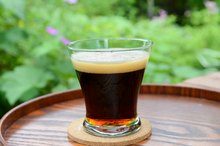What does fact checked mean?
At Healthfully, we strive to deliver objective content that is accurate and up-to-date. Our team periodically reviews articles in order to ensure content quality. The sources cited below consist of evidence from peer-reviewed journals, prominent medical organizations, academic associations, and government data.
The information contained on this site is for informational purposes only, and should not be used as a substitute for the advice of a professional health care provider. Please check with the appropriate physician regarding health questions and concerns. Although we strive to deliver accurate and up-to-date information, no guarantee to that effect is made.
Calories in 1/4 Cup Sugar
Different sugars have different taste, texture and baking profiles. White sugar has the most versatility for both raw and cooked use. Brown sugar excels for use in baked goods, and powdered sugar provides the sweetness and consistency ideal for frostings 2.
White Sugar
White sugar contains about 194 calories per 1/4 cup. This easily digested, highly refined source of carbohydrate energy typically comes from the highly processed juice of sugar cane or sugar beets.
Brown Sugar
What Are the Health Benefits of White Yams?
Learn More
Brown sugar contains white sugar plus added molasses. Dark brown sugar contains more molasses than light brown sugar, and has a more intense molasses flavor. However, dark and light brown sugar contains the same calories, about 212 calories per 1/4 cup.
- Brown sugar contains white sugar plus added molasses.
- Dark brown sugar contains more molasses than light brown sugar, and has a more intense molasses flavor.
Powdered Sugar
Powdered sugar consists of granulated white sugar crushed into a fine powder, with about 3 percent cornstarch added to prevent clumping 2. Because of the fine consistency, 1 cup of white granulated sugar equals about 1.75 cup powdered sugar 2. As a result, powdered sugar contains less calories per unit volume than white, granulated sugar, only about 118 calories per 1/4 cup 2.
Related Articles
References
- Healthaliciousness.com: Nutrition Facts Comparison
- Food.com: Kitchen Dictionary, Powdered Sugar
- Sugar, brown. FoodData Central. U.S. Department of Agriculture. Updated April 1, 2020.
- Mergenthaler P, Lindauer U, Dienel GA, Meisel A. Sugar for the brain: the role of glucose in physiological and pathological brain function. Trends Neurosci. 2013;36(10):587‐597. doi:10.1016/j.tins.2013.07.001
- Rippe JM, Angelopoulos TJ. Sugars, obesity, and cardiovascular disease: results from recent randomized control trials. Eur J Nutr. 2016;55(Suppl 2):45‐53. doi:10.1007/s00394-016-1257-2
- Allergy/intolerance to sugar. American Academy of Allergy, Asthma, and Immunology. Updated: 5/7/2019
- Jung CG, Yang EM, Lee JH, Kim SH, Park HS, Shin YS. Coca-Cola allergy identified as fructose-induced anaphylaxis. J Allergy Clin Immunol Pract. 2018;6(5):1787-1789.e1. doi:10.1016/j.jaip.2018.02.003
- Mahan LK, Chase M, Furukawa CT, et al. Sugar "allergy" and children's behavior. Ann Allergy. 1988;61(6):453‐458.
- Guidelines ask Americans to limit intake of added sugars. American Dental Association. January 07, 2016
- Gorshteyn, Ida. The Truth About Sugary Drinks and Your Smile. American Dental Association.
- Changes to the Nutrition Facts Label. U.S. Food and Drug Administration. Updated March 12, 2020.
- Sugar, brown. USDA FoodKeeper App. Updated April 26, 2019
Writer Bio
Robin Wasserman has been writing and prosecuting biochemical patents since 1998. She has served as a biochemical patent agent and a research scientist for a gene-therapy company. Wasserman earned her Doctor of Philosophy in biochemistry and molecular biology, graduating from Harvard University in 1995.









